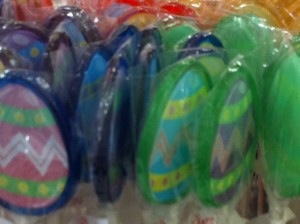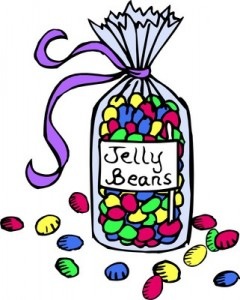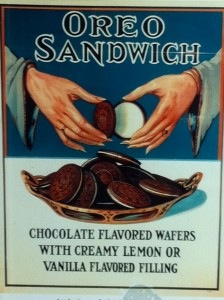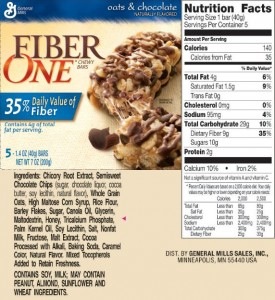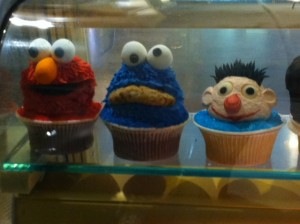 I spotted these at a bakery in Chelsea Market in New York City.
I spotted these at a bakery in Chelsea Market in New York City.
Would a kid want to eat Ernie’s hair or Cookie Monster’s eyes or Elmo’s nose? Maybe yes, maybe no — I guess it would depend on the child’s age and feelings about Sesame Street characters.
And, what about all of the food coloring — and the fat and sugar necessary to mould the shapes of these cupcakes?
Eye appeal — but what about health appeal?
